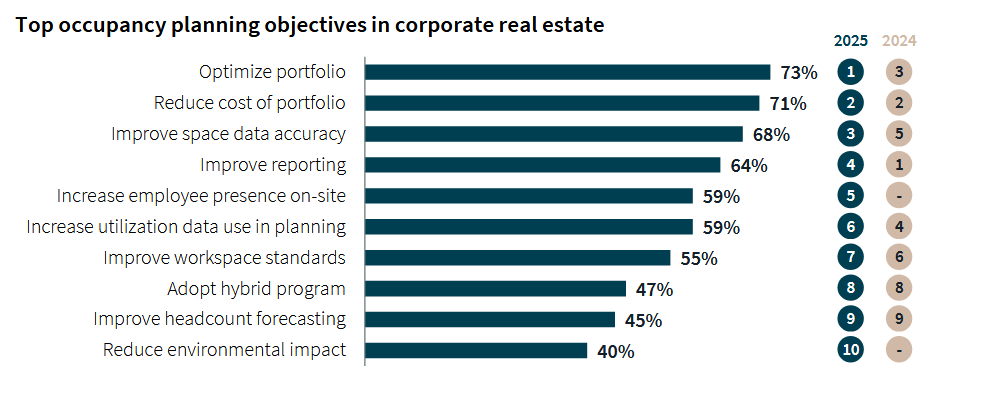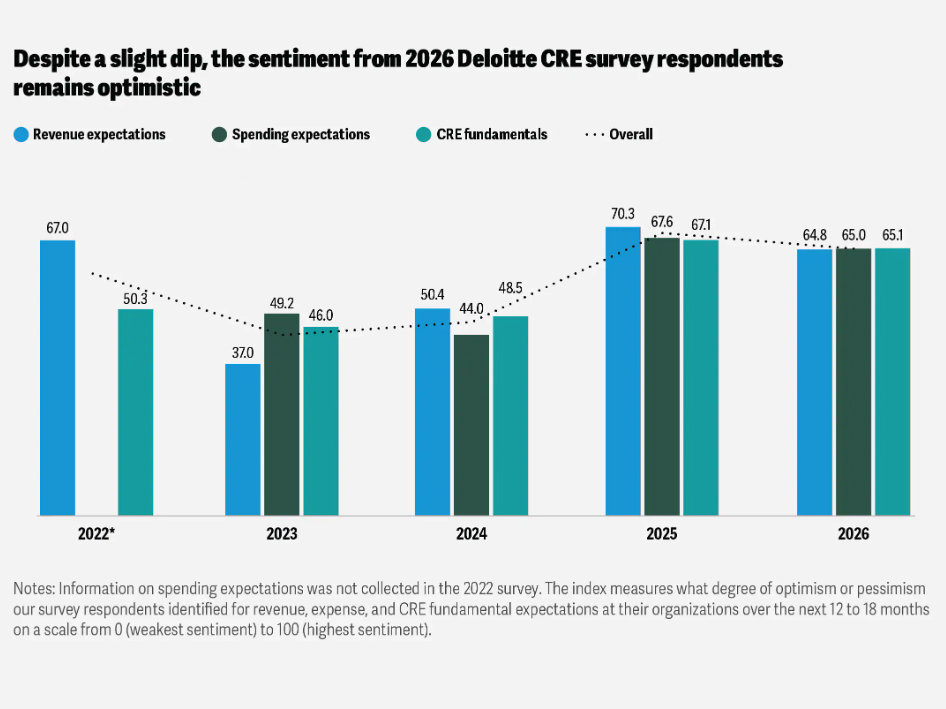Office Users’ Top Priority Today
There’s been a shift in corporate real estate objectives, according to JLL’s research.
Portfolio optimization has edged out cost-cutting as the highest priority for corporate real estate execs, while the return-to-office trend makes additional headway, according to JLL’s latest occupancy planning benchmark report, just out this morning.
“(W)orkplaces are at a pivotal moment of transformation signaled by corporate real estate leaders changing their priorities,” said Paul Morgan, COO of Work Dynamics at JLL. “Data has become the critical factor in enabling organizations to better understand how their spaces are being used so they can best leverage their real estate portfolios and navigate new work styles.”
The other three leading priorities in the survey were improving space data accuracy and reporting, increasing employee presence on site and growing the use of utilization data for space planning, based on responses from 99 global organizations that represent more than 745 million square feet of commercial real estate portfolios.

An important element of portfolio optimization is sustainability; 74 percent of organizations reported active sustainability programs such as waste-reduction initiatives and furniture reuse plans. Additional approaches include minimizing construction waste by reusing existing infrastructure in new layouts when possible and reducing overall square footage to core needs, so as to help lower the carbon footprint of real estate holdings.
Tightly tied to right-sizing of space requirements has been office utilization, with the rate globally rising from 49 percent in 2024 to 54 percent in this current survey.
READ ALSO: Top 5 Office Projects Under Construction in Manhattan
Clearly, companies are taking real steps to boost office utilization, such as implementing return-to-office mandates (42 percent). JLL reported that “structured office mandates are delivering the strongest results with a remarkable 61 percent effectiveness rate, proving that clear direction can significantly outperform other utilization strategies.”
About two-thirds (68 percent) of companies responding to the survey are requiring either a specified number of in-office days or designating specific in-office days, up from 61 percent last year.
In parallel with that, said Melissa Michalik, global leader of occupancy planning and management at JLL, there has been a “collapse of fully flexible arrangements, which have plummeted from 41 percent to 15 percent in the same timeframe, signaling a definitive shift as companies reclaim control of workplace attendance patterns to drive collaboration and culture.”
The office, new and improved
If that was the stick, the corresponding carrot, JLL suggests, has been that companies are continuing to invest in such supporting technologies and facility modifications as reservation systems (58 percent), collaboration spaces (56 percent) and minor facility reconfigurations (50 percent).
Further, corporations are investing in more efficient and also presumably more inviting office spaces. Trending features include spaces for focused work and collaboration, such as private phone booths, focus areas and small meeting spaces. More specialized spaces like mother’s rooms, prayer and meditation spaces, wellness areas and storage lockers are also trending. Meanwhile, private offices are declining.
And concurrently, space standards continue to evolve. The average per-person space for office and administrative personnel, JLL says, has decreased from 171 to 165 rentable square feet year-over-year, though this is still above the target of 132 rentable square feet. Sit-to-stand desks are becoming standard: 77 percent of companies are providing them in new buildouts, compared with 67 percent last year.







You must be logged in to post a comment.